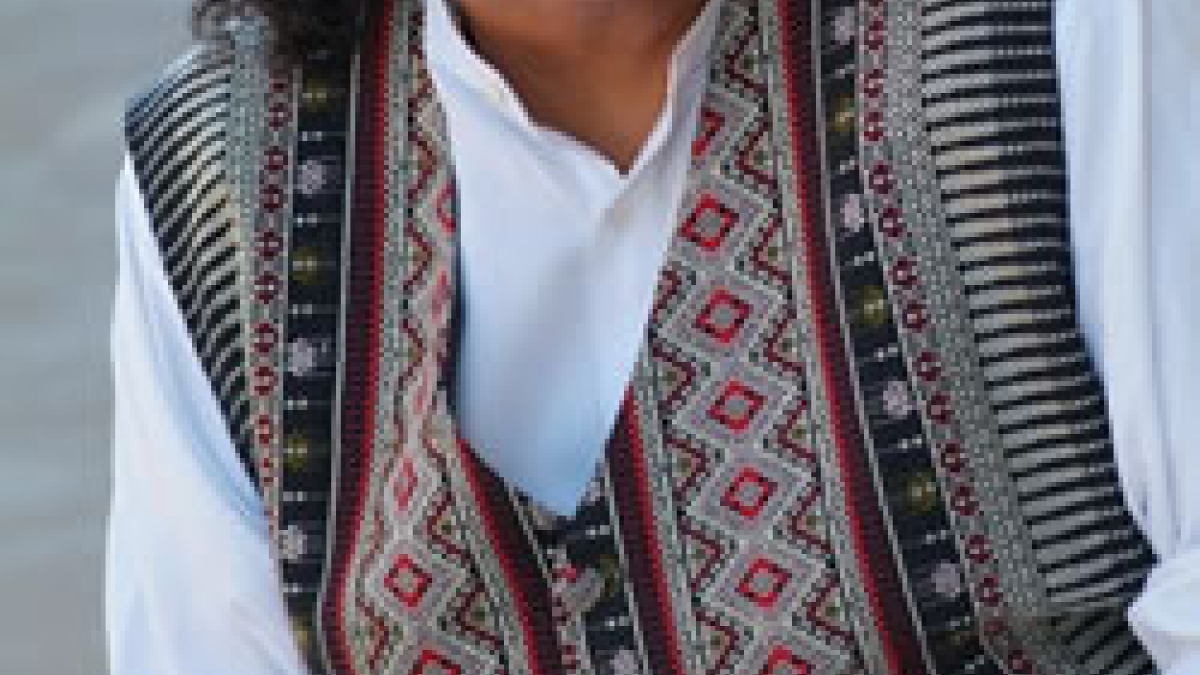World renowned artist to headline Ortiz/Labriola Lecture

World renowned Edgar Heap of Birds will headline the annual Simon Ortiz and Labriola Center Lecture on Indigenous Land, Culture, and Community at the Heard Museum at 7 p.m., Thursday, March 20.
ASU News spoke with him about his inspiration and ground-breaking work.
What first attracted you to the arts?
I was attracted to arts as a young child via drawing – to make up what I wondered about: cars, airplanes, I guess boy stuff. Kiowa/Comanche artist Blackbear Bosin was a huge influence for me growing up in Wichita, Kan., during my teen years. He made art about Native life and was a popular figure locally. He mainly showed me that a native person could live and work as an artist. His subject matter was not very challenging, but to be a contemporary artist was a true challenge in America at that time, for an Indian. Later in graduate school, I was heavily influenced by New York City performance artist Vito Acconci.
You use a variety of mediums to express your art. Which one is your favorite?
I choose to work in many mediums because it serves the multiple parts of my existence. As humans, we are all complex people, but modern life and also the “Master Work” model for the artist (based on a classic Euro model) limits us to one form of job or art image. As I move through my diverse forms of art making, I can express myself better. It is hard to pick my favorite, but I guess the use of three-word phrases done in mono print is quick from my mind, and is realized in an almost mystical print medium. The three-word phrases are reminiscent of the new wave band “Talking Heads” and David Byrne, in particular. I was in grad school near New York City during the late 1970s, and their music and lyrics were in the flow then.
Where does your inspiration come from?
My inspiration comes from love of our indigenous lands and seas throughout the earth and its indigenous peoples and communities. I work globally, from Zimbabwe to Australia and Bali to Oklahoma, Europe and beyond. With these priorities then, one comes to the political issues which most are pronounced in order to protect the peoples, lands and seas. Thus, the inspiration also becomes subject.
How does your Native American heritage influence your work?
The main way my Native heritage influences my work is to always bear in mind a sense of reciprocity and grace.
What can the audience expect from your presentation at the Ortiz/Labriola Lecture?
For the Ortiz lecture, I will offer a traditional beginning of how Native women carry our past and future, and how as artists we work to protect what they are given. I will share many collaborative art projects from throughout the world, and also share my four or so specific art practices, including painting, public art, glass blowing, sculpture, printmaking and drawing. In addition to the PowerPoint talk, I will present short videos concerning recent art projects from Venice, London and Los Angeles.
What can we expect to see in the future from you as an artist?
At this time, I am painting newer versions of my “Neuf Series” paintings that come from time spent walking in the western Oklahoma landscape. I plan to offer more time to my painting in order for the practice to have a deeper development. I also plan to extend my public art projects, now begun in the Cheyenne and Arapaho reservation community halls. These 8- by 16-feet digital murals honor tribal elder artists from our sacred communities.
To learn more about the lecture, please visit the ASU Events calendar.
ASU Sponsors: American Indian Policy Institute; American Indian Studies Program; Department of English and School of Historical, Philosophical, and Religious Studies, both in the College of Liberal Arts and Sciences; Indian Legal Program in the Sandra Day O'Connor College of Law; Labriola National American Indian Data Center; School of Art in the Herberger Institute for Design and the Arts; Women and Gender Studies in the School of Social Transformation